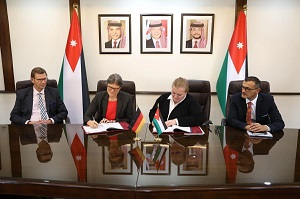Visiting sites as a path to discovering Jordan’s history - By Zaid K. Maaytah , The Jordan Times
Jordan’s story is often told through familiar images: the rose-red stones of Petra, the star-filled skies of Wadi Rum, and the calm waters of the Dead Sea. Yet behind these postcards lie countless secrets of history that many Jordanians do not know; Jordan holds some of the earliest traces of human existence, the world’s oldest statues, found in Ain Ghazal more than 12 thousand years ago. Prophets walked its valleys, nations rose and fell upon its land, and layers of civilization accumulated within a distance that can be crossed in only a few hours, and few countries possess such temporal and geographic richness, with more than fifteen thousand registered archaeological sites, most of which remain unfamiliar to Jordanians themselves. This raises a question: what if we traveled not just to enjoy, but to understand the story of our own country?
Most tourism activity in Jordan focuses on adventure, leisure, and religious travel, while all valuable sectors, yet they represent only part of the true picture as tourism that relies on brief visits to famous landmarks cannot create a lasting relationship with place. A new and promising direction lies in educational and knowledge-based tourism, journeys motivated by curiosity and the desire to learn. Such experiences might include archaeological routes for history enthusiasts, religious trails following ancient faith sites, environmental tours through reserves and valleys, or visits to renewable-energy projects that reflect Jordan’s modern vision, each of these can become an open lesson in geography, history, and environment.
Turning this vision into practice requires a deeper understanding of how people make decisions. For that, Jordan needs a new concept for its tourism strategy, one grounded in the principles of behaviorally intelligent design. This strategy is not about more advertising or lower prices, but about shaping experiences around what genuinely motivates people to explore, but recognizes that curiosity spreads from person to person, and that travelers are drawn to experiences that feel easy, engaging, and meaningful. To achieve this, Jordan can develop short weekend trails, create open-air archaeological parks that merge learning with leisure, or establish historical routes connecting ancient cities and religious sites along a single line that tells the story of human development on this land. When such experiences are presented in an accessible and well-organized way, travel decisions become simpler and more attractive, and visitors begin to feel like part of an ongoing story rather than mere spectators.
International experiences have shown that this approach can create a deep connection between visitors and the places they explore. In Japan, for instance, small towns have developed locally led tours guided by residents who share the daily stories of their lives and neighborhoods, making the experience more authentic and enduring. In Portugal, community associations organize walks through old districts accompanied by long-time residents, allowing visitors to see the culture of the place through the eyes of those who live it. In Finland and Costa Rica, educational tourism initiatives blend nature with hands-on learning in fields such as energy, environment, and sustainability.
This concept could also extend to citizen-led tourism, where residents themselves become guides who share their experiences directly with visitors in their own words, the traveler listens to the local community and feels part of the place rather than an outsider. Such initiatives require little financial investment, only local empowerment and simple training in storytelling and hosting, yet they can revive lesser-known areas and integrate them into the national economy in a direct and human way.
This behavioural shift in how tourism is viewed carries profound economic and social benefits as it lengthens visitors’ stays, spreads income across more communities, and creates new jobs in guiding, education, crafts, and local services, it also reconnects citizens with their country through lived experience rather than rhetoric and allows foreign visitors to discover Jordan through genuine interaction with its people instead of glossy brochures.
The world’s most successful tourism models are those that understand human behavior before studying markets. For Jordan, such understanding begins from within. Investing in educational and knowledge-based tourism is not a leisure activity but a strategic step toward rebuilding the relationship between people and place. When we travel to learn, we discover that the most meaningful journeys are not measured by distance but by what we return with in understanding. And in a land that has preserved the earliest chapters of human history, perhaps the greatest journey we can offer the world begins with our own curiosity to rediscover what we already have.
Zaid K. Maaytah — Researcher in Economics and Behavioral Sciences




